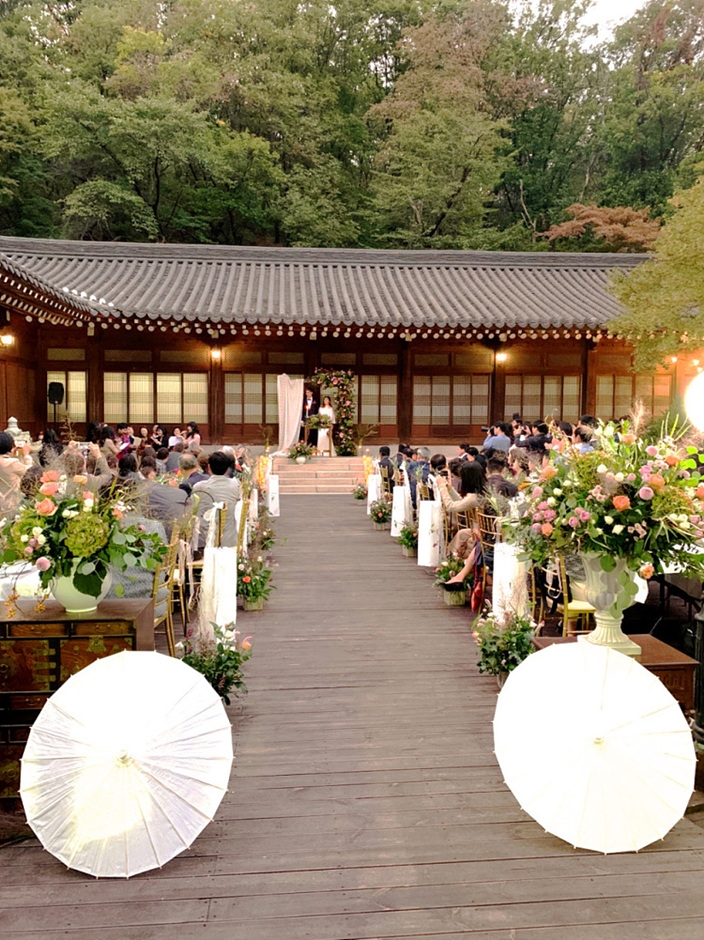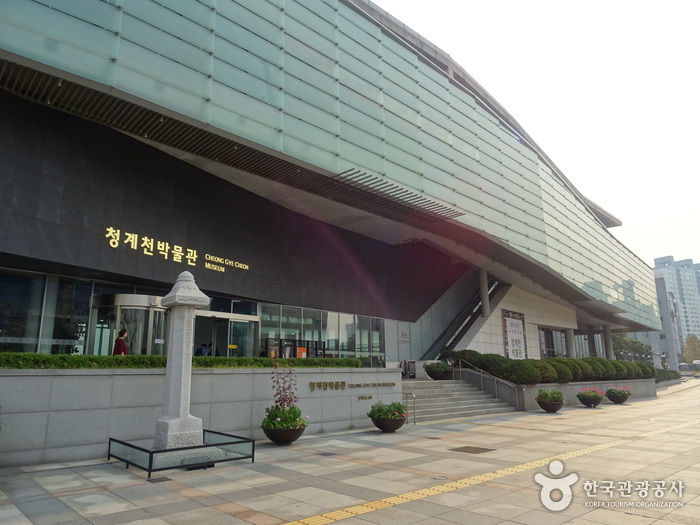East Nine Royal Tombs [UNESCO World Heritage] (구리 동구릉 [유네스코 세계문화유산])
6.3Km 2024-03-20
197 Donggureung-ro, Guri-si, Gyeonggi-do
+82-31-563-2909
The East Nine Royal Tombs, situated on the eastern outskirts of Hanyang (the Joseon dynasty capital), represent a significant collection of nine royal burial sites. This area serves as the final resting place for seven kings and ten queens from the Joseon era. The surrounding forest paths are accessible to the public during the spring and fall seasons. Additionally, the East Nine Royal Tombs Healing Culture and Arts Festival takes place here every autumn, offering a blend of cultural and artistic experiences.
Hanok Stay Unnie house [Korea Quality] 한옥스테이 언니집 [한국관광 품질인증]
6.3Km 2024-08-14
13-3, Wangsan-ro 5-gil, Dongdaemun-gu, Seoul
+82-504-0904-2568
Unnie house ("Sister House") on Wangsan-ro, Dongdaemun-gu, Seoul, is a private hanok stay in the heart of the city. The house is inside an alleyway, where it’s quiet and tranquil. The accommodation consists of a living room, kitchen with exposed beams, lounge with a beam projector for watching movies, bathroom, bedroom, separate tea ceremony room, and yard. The absence of clutter and attention to detail in this space will heal and relax.
Seonungak (한옥카페 선운각)
6.4Km 2025-10-29
223 Samyang-ro 173-gil, Gangbuk-gu, Seoul
Seonungak is a hanok cafe facing Doseonsa Temple at the foot of Bukhansan Mountain, the perfect location to take in the beauty of the changing seasons. The cafe is also the largest hanok building outside of the royal palaces in Seoul. Previously limited to weddings and filming events, the hanok has reopened as a cafe, selling a range of traditional Korean drinks.
Yongma Falls Park (용마폭포공원)
6.4Km 2024-02-20
250-12 Yongmasan-ro, Jungnang-gu, Seoul
Yongma Falls Park is situated on the mid-slope of Yongmasan Mountain, established following the closure of an aggregate collection plant. The park showcases three artificial waterfalls: Cheongnyongpokpo Falls, Baengmapokpo Falls, and Yongmapokpo Falls. Each waterfall comprises two tiers, with x_heights ranging from 21m to 51.4m. The park is equipped with various amenities, including ponds, tennis courts, soccer fields, a wildflower garden, walking trails, and a barefoot walking trail.
Innisfree - Sinseol-dong Station Branch [Tax Refund Shop] (이니스프리 신설동역)
6.4Km 2024-04-17
1F, 20, Wangsan-ro, Dongdaemun-gu, Seoul
-
CheongKwanJang - Sinseol-dong Branch [Tax Refund Shop] (정관장 신설동점)
6.5Km 2024-06-27
9, Wangsan-ro, Dongdaemun-gu, Seoul
-
Space Moda [Korea Quality]스페이스 모다[한국관광 품질인증]
6.5Km 2025-05-15
19-17 , Samseongyo-ro 6-gil, Seongbuk-gu, Seoul
+82-10-9952-0152
Space Moda is a quiet, modernized hanok nestled in an alley in Seonggwak Village next to Naksan Park in Seongbuk-gu, Seoul, and is let out as a single house. The guesthouse aims for zero waste and low energy use, and encourages sustainable travel. A small yard serves as a resting place for travelers. Guests will enjoy exploring the neighborhood’s many cafes, restaurants, and bars, all a short walk away; while transportation access is good, with Hansung University Subway Station nearby. There is a car park a short distance away.
Olive Young - Sinseol-dong Station Branch [Tax Refund Shop] (올리브영 신설동역)
6.6Km 2024-04-16
4, Wangsan-ro, Dongdaemun-gu, Seoul
-
Cheonggyecheon Museum (청계천박물관)
6.6Km 2021-11-02
530, Cheonggyecheon-ro, Seongdong-gu, Seoul
+82-2-2286-3410
Cheonggyecheon Museum officially opened in October 2005. The museum’s long, glass exterior represents the flowing waters of Cheonggyecheon Stream, which runs through the heart of Seoul. The museum has a permanent exhibition hall, special exhibition hall, educational hall, and an auditorium. The museum contains visual representations of Seoul before and after the transition of Cheonggyecheon Stream. The permanent exhibition hall was remodeled in October 2015, and now offers even more ways to view the history of Seoul as shaped by Cheonggyecheon Stream.

![Hanok Stay Unnie house [Korea Quality] 한옥스테이 언니집 [한국관광 품질인증]](http://tong.visitkorea.or.kr/cms/resource/00/2948900_image2_1.jpg)

![Innisfree - Sinseol-dong Station Branch [Tax Refund Shop] (이니스프리 신설동역)](http://tong.visitkorea.or.kr/cms/resource/30/2888030_image2_1.jpg)
![CheongKwanJang - Sinseol-dong Branch [Tax Refund Shop] (정관장 신설동점)](http://tong.visitkorea.or.kr/cms/resource/38/3313538_image2_1.jpg)
![Space Moda [Korea Quality]스페이스 모다[한국관광 품질인증]](http://tong.visitkorea.or.kr/cms/resource/80/3490980_image2_1.jpg)
![Olive Young - Sinseol-dong Station Branch [Tax Refund Shop] (올리브영 신설동역)](http://tong.visitkorea.or.kr/cms/resource/24/2888624_image2_1.jpg)

 English
English
 한국어
한국어 日本語
日本語 中文(简体)
中文(简体) Deutsch
Deutsch Français
Français Español
Español Русский
Русский